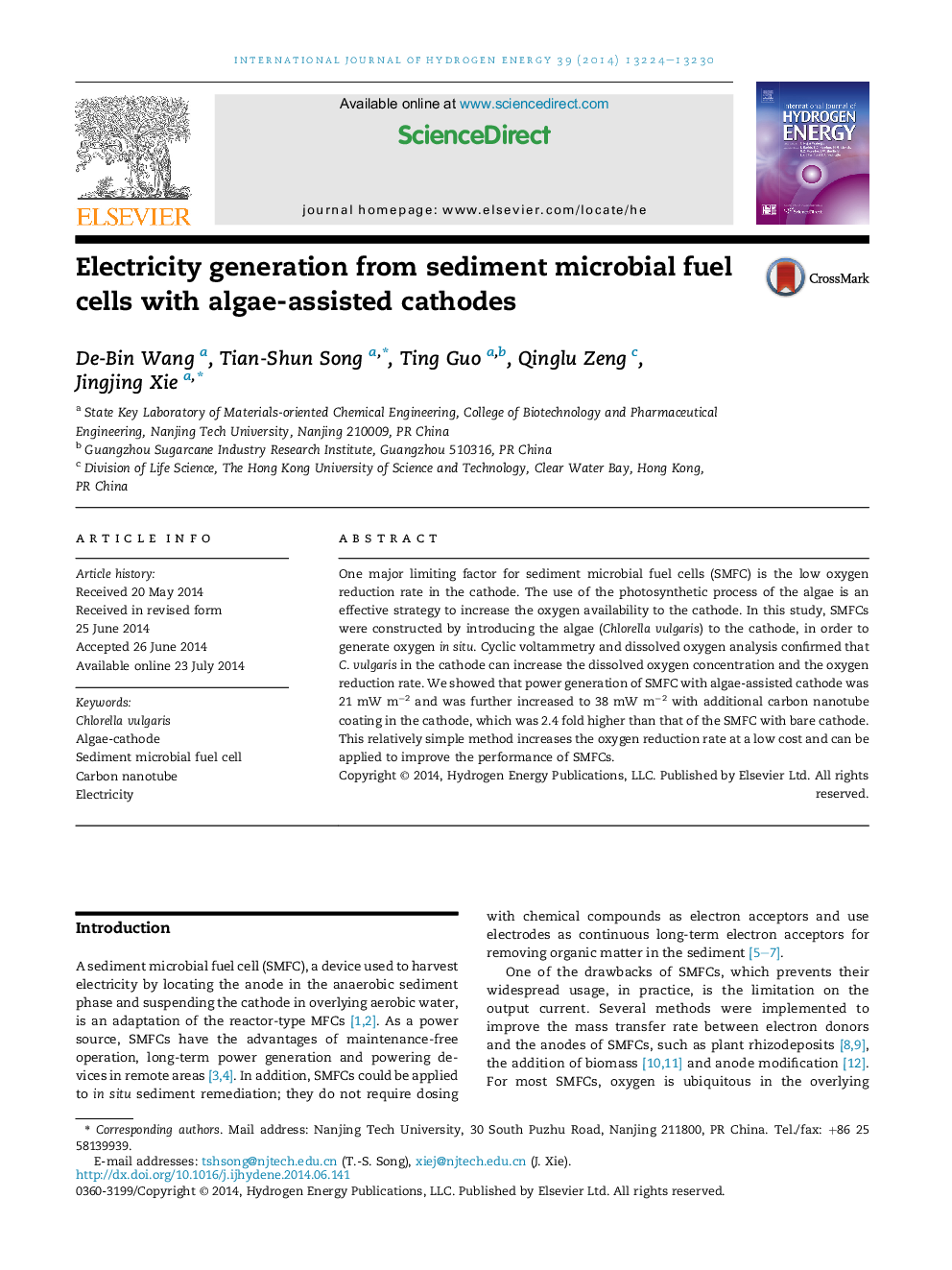| Article ID | Journal | Published Year | Pages | File Type |
|---|---|---|---|---|
| 1272610 | International Journal of Hydrogen Energy | 2014 | 7 Pages |
•C. vulgaris is efficient in situ oxygenators for the oxygen reduction reaction.•Carbon nanotube strengthens the oxygen reduction rate from C. vulgaris release.•C. vulgaris can be cultivated in SMFC without any further addition of CO2.•We report a simple method for improving the performance of SMFC.
One major limiting factor for sediment microbial fuel cells (SMFC) is the low oxygen reduction rate in the cathode. The use of the photosynthetic process of the algae is an effective strategy to increase the oxygen availability to the cathode. In this study, SMFCs were constructed by introducing the algae (Chlorella vulgaris) to the cathode, in order to generate oxygen in situ. Cyclic voltammetry and dissolved oxygen analysis confirmed that C. vulgaris in the cathode can increase the dissolved oxygen concentration and the oxygen reduction rate. We showed that power generation of SMFC with algae-assisted cathode was 21 mW m−2 and was further increased to 38 mW m−2 with additional carbon nanotube coating in the cathode, which was 2.4 fold higher than that of the SMFC with bare cathode. This relatively simple method increases the oxygen reduction rate at a low cost and can be applied to improve the performance of SMFCs.
